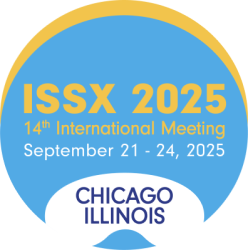
Conference: ISSX 2025 International Meeting
Date: September 21 - 24, 2025
Location: Chicago, Illinois
Booth: 315
Get an exclusive preview of DIDB Concomitant Meds Navigator
Built on regulatory agency-recommended classifications and powered by DIDB data, Concomitant Meds Navigator is scheduled to launch in Fall 2025. Sign up for a product demo to learn about how Concomitant Meds Navigator helps scientists to quickly identify concomitant medications.
Where to hear Certara insights and expertise
Co-Chairs: Lei Zhang, Silver Springs, MD; Dennis Heller, Certara
Human radiolabeled mass balance studies are an important component of the clinical pharmacology programs supporting the development of new investigational drugs. These studies allow for understanding of the absorption, distribution, metabolism, and excretion (ADME) of the parent drug and metabolite(s) in the human body. Understanding the drug’s disposition as well as metabolite profiling and abundance via mass balance studies can help inform the overall drug development program. Recently, U.S. FDA published the final guidance on “Clinical Pharmacology Considerations for Human Radiolabeled Mass Balance Studies” (https://www.fda.gov/media/158178/download). This short-course will discuss the purpose and design of human mass balance study, metabolite profiling, data analysis and interpretation. When to conduct mass balance study in drug development and how the data may be used to support various decision making related to drug-drug interactions and supporting PBPK modeling will be discussed. New development and regulatory expectation and perspectives will also be provided.
- Mass balance study and metabolite profiling: Design, data analysis, and interpretation – Chandra Prakash, Agios Pharmaceuticals, USA
- Industry application and case examples – Ellen Cannady, Eli Lilly, USA
- FDA guidance on human radiolabeled mass balance studies and regulatory perspectives – Zhixia Yan Danielsen, US Food and Drug Administration, USA
- EMA’s perspectives on human mass balance studies – Karin Fawkner, Medical Products Agency, Sweden
Co-Chairs: Bhagwat Prasad, Cincinnati Children’s Hospital and Eva Berglund, Certara
This short course will focus on the role of clinical probes and biomarkers in evaluating transporter-mediated drug-drug interactions (DDIs). Attendees will gain insights into the emerging importance of transporter biomarkers in drug development, with emphasis on how they inform and confirm DDI risk of an investigational drug. The short-course will also include the selection and application of clinical drug probes to assess transporter function, study design considerations, and the interpretation of resulting data. Regulatory perspectives of biomarkers as well as exogenous probes will be discussed to highlight best practices and emerging guidelines for incorporating transporter biomarkers and drug probes into DDI risk assessments during drug development.
- Strengths and weaknesses of biomarker PBPK models to assess transporter-mediated DDIs – Hiroyuki Kusuhara, The University of Tokyo, Japan
- Endogenous probes in practice, purpose, when in drug development, study design considerations – Bridget Morse, Lilly, USA
- Clinical transporter probes: Selectivity and sensitivity – Xiaoyan Chu, Merck, USA
- Endogenous transporter probes from a clinical pharmacology perspective -Xinning Yang, Ellicott City, MD, USA
Focus Group: Modeling & Simulation
Host: Oliver Hartley, Senior Principal Scientist, Certara Simcyp
Poster presentations
Presenting Author: Jingjing Yu, Director, Drug Interaction Solutions
Co-Author(s): Sophie Argon, Katie Owens, Yan Wang, Isabelle Ragueneau-Majlessi
In the present work, drug metabolism, drug transport, and drug interaction in vitro, in silico, and clinical data for small molecular drugs approved by the U.S. Food and Drug Administration in 2024 (N = 34) were analyzed using Certara Drug Interaction Database (DIDB®)
Presenting Author: Nathalie Rioux, Vice President, Early Drug Development
Co-Author(s): Monicah Otieno, Upendra A. Argikar
Presenting Author: Oliver Hatley, Senior Principal Scientist, Simcyp, Certara
Co-Authors: Olha Shuklinova, Anna Murphy, Roz Southall, Eman El-Khateeb, Jingjing Yu, Isabelle Ragueneau-Majlessi, Iain Gardner
Schedule a demo or request a free trial
Discover how DIDB® can transform your drug development process. Schedule a demo or request a free trial today to explore its advanced features and capabilities.
You May Also Like
Presenting Author: Nathalie Rioux, Vice President, Early Drug Development
Co-Author(s): Monicah Otieno, Upendra A. Argikar





